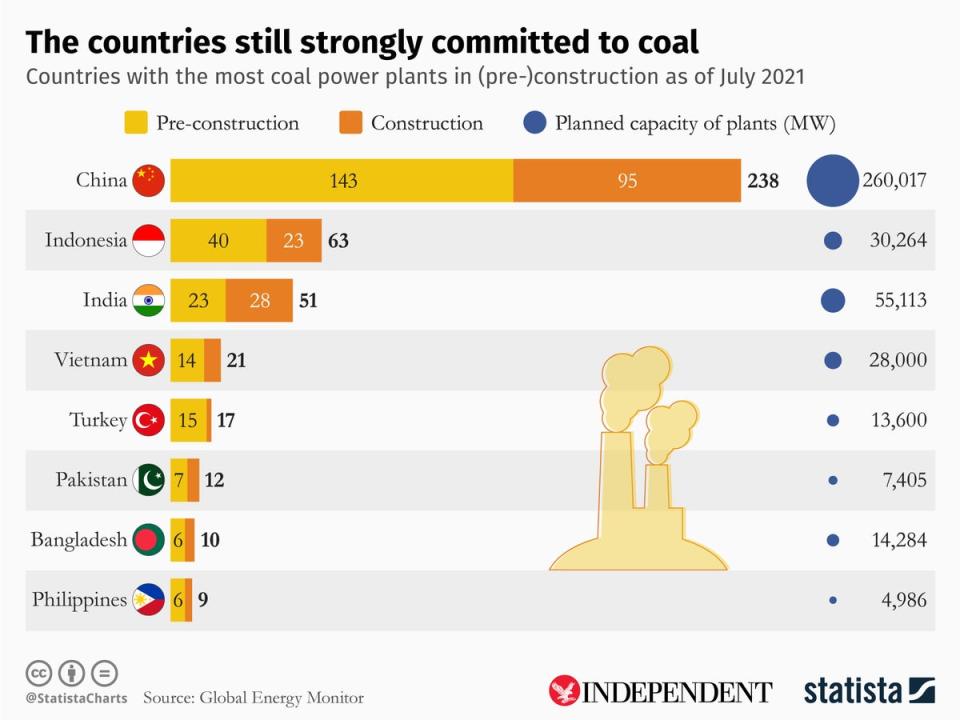India can cut electricity costs by 40% by moving to renewables and slashing coal, study says
India can cut down its electricity cost by 40 per cent if it transitions to renewable energy and reduces its dependence on coal as a dominant source, according to a new study.
India, which depends on coal for over 80 per cent of its energy needs due to its availability and affordability in the region, has set targets to increase the share of renewables in its energy mix. However, it faces economic challenges in choosing a rapid transition away from coal.
But new research published on Wednesday in peer-reviewed journal Nature Communications, claimed long-term benefits of increasing renewables faster may bring down prices by almost half in the next 30 years.
The study, carried out by researchers at Lappeenranta-Lahti University of Technology (LUT) in Finland, models the Indian power sector transition in a state-wide resolution on an hourly timescale up to 2050 for the first time.
It estimated the cost for renewables was going to continue to reduce with fast developing technology, making it a much cheaper source compared to coal, the most polluting of all fossil fuels already under increased scrutiny for its role in the climate crisis.
This decrease in cost is enabled by the cost of competitive pricing of batteries required for storing solar energy as India continues to build more capacity for the renewable resource.
Solar and wind power costs have already declined significantly compared to coal in the last few years. The research estimates it is expected to fall further by another 50-60 per cent by 2050.
In comparison, per megawatt cost of electricity from coal is expected to increase by 70 per cent and the cost of nuclear power is expected to increase by more than 13 per cent, making clean energy more cost efficient for developing economies like India.
The study said that in 2030, solar energy will be one-fifth the cost of coal-based electricity and in 2050, it would fall further to one-tenth of the cost of thermal energy. Solar energy will be 50 per cent less costly than gas in 2030 and one-fifth the cost in 2050.
Some key Indian states can achieve 100 per cent sustainable energy as early as 2035 if they adopt a rapid transition based on the resources available to them, the study suggested.

Other heavily populated and coal-dependent states, such as Uttar Pradesh, Odisha, West Bengal, Maharashtra, Gujarat and Jharkhand, can phase out coal as early as 2040.
“Moving to solar is the obvious choice for India. Not just the cost of solar, the cost of battery storage is expected to drop further making it even easier for grid balancing and managing peak demand,” said Manish Ram, one of the authors of the study.
“Our study shows that any new investments in fossil fuel-based thermal power capacity today is economically unviable and could be a burden for a future flexible power system.”
India has ambitious plans to increase the share of renewables in its power mix. In its updated Nationally Determined Contributions (NDC) ahead of the UN climate change summit Cop27, India has set a target to have installed capacity for non-fossil fuel based power sources equivalent to half of the country’s requirement by 2030.
The new draft National Electricity Plan 2022 also says solar targets for 2032 increased by 18 per cent compared to India’s earlier estimates. India also increased its battery storage target from 27GW of four-hour storage to 51GW of five-hour storage.
However, despite ambitious short-term targets and a long-term goal to achieve carbon neutrality by 2070, India seems to rebound to coal frequently as extreme weather events overwhelm its electricity supply.

Given its increasing needs and priorities to make electricity available to its massive 1.3bn population. it plans to expand its coal power fleet “by about a quarter through the end of the decade”, reported Bloomberg, based on an interview with the country’s power minister RK Singh.
Mr Singh said India planned to add “nearly 56GW of coal power capacity unless there’s a substantial drop in the cost of storing electricity” and that India “will not hesitate to import coal” to meet shortfalls.
The country fell back to coal earlier after the record-breaking heatwave led to a power crunch with monsoon-related supply disruptions threatening its stability.
Experts, however, said bringing long-term targets in line with its transition and carbon neutrality goals may help the country display its commitment to the larger picture and the growth possibilities renewables offer, despite short-term challenges.
“India already has ambitious renewable energy targets till 2030, but what is missing is more ambitious long-term targets with the goal of climate neutrality, which will send a clear message to global investors and stakeholders,” said Christian Breyer, a professor and one of the authors of the study.
“This is a great opportunity for India to be a trendsetter in particular for emerging and developing countries in the sunbelt.”

